|
|
ADDRESS AT THE INAUGURATION OF THE NATIONAL CHILDREN'S SCIENCE CONGRESS, ERODE, TAMIL NADU
18-12-2006 : Erode, Tamil Nadu
Science is a Lifetime mission
"Thinking provides knowledge
Knowledge makes you great"
I am indeed delighted to address the National Children's Science Congress organized by Tamilnadu Science Forum. My greetings to the organizers, students, teachers and science planners participating in this Congress. I am happy to know that the Tamilnadu Science Forum is creating awareness among the student's community and public about scientific thoughts and inculcating systematic way with the help of learned faculty members and research guides. I greet all of you for having completed silver jubilee by 2005 in your mission of promoting scientific temper among the youth. Several science publications and periodicals such as "Tulir" in Tamil, Jantar Mantar in English really kindle the minds of the youth and provides an innovative platform to observe, think leading to creativity and innovation.
Dear Children, now I would like to highlight one event that presents the richness of the imagination of a 13-year-old student in our country, who is like one amongst you.
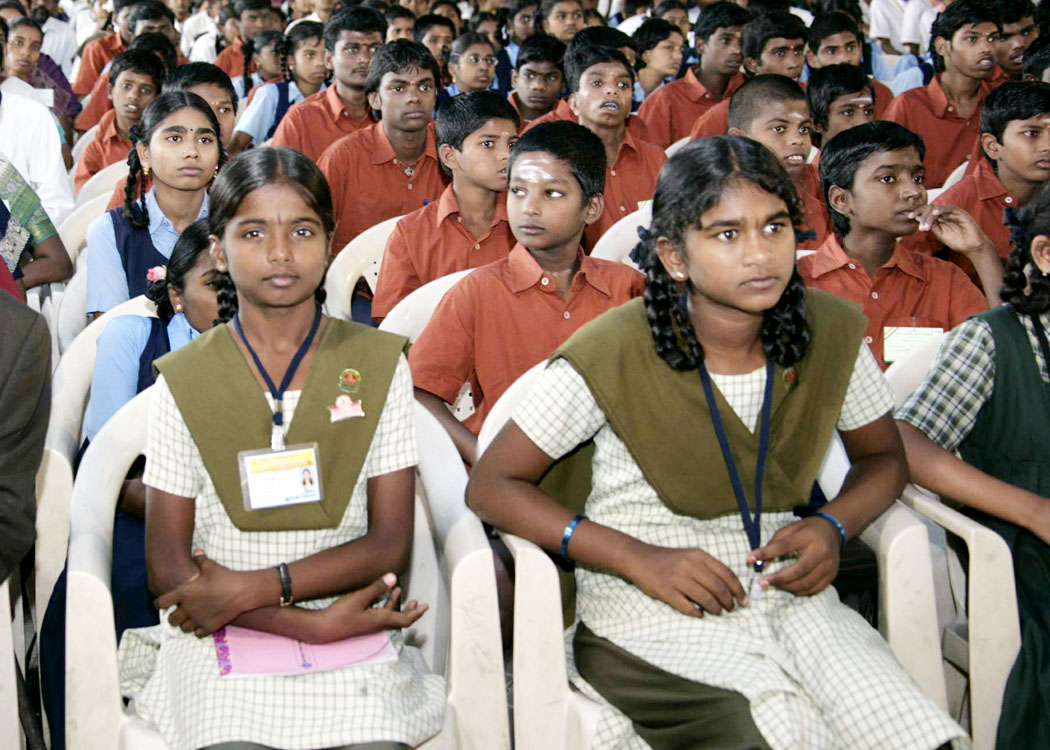

Planetary life - 3000 AD
On 22 March 2005, I participated in the award ceremony of Shankar's International Children's Competition at New Delhi. There I found the visualization of a 13 year old girl named Aardhra Krishna on how the earth's civilization will look like around 3000 AD. In her imagination, the citizens are forced to migrate to Mars and have made Mars the home to a flourishing civilization. This advanced civilization, which was man made, comes suddenly under threat created by nature in the form of an asteroid of Jupiter. The asteroid from Jupiter orbit was coming towards Mars and Mars was in danger of extinction. The scientists on Mars come up with a very innovative plan of a barrage of nuclear cannons to attack the oncoming asteroid. The bombardment destroys the asteroid and the year 3000 sees a Martian civilization surviving from the fury of the nature by an innovative scientific application. What a wonderful thinking of a young girl !. Dear students, I am sure your minds are equally powerful in visualizing and thinking. Now, let me share with you an event which actually took place in July 2005 through a NASA Space experiment.
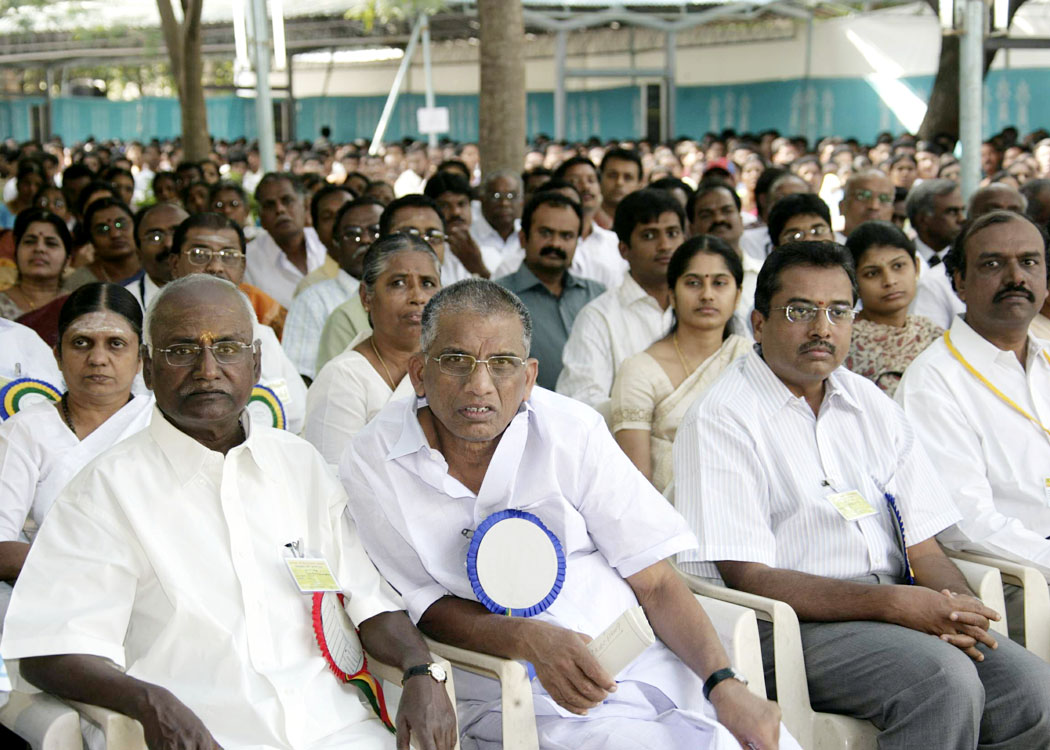

Deep Impact on Comet Tempel-I
This event relates to the impact of the NASA spacecraft called deep impact smashing into the comet Tempel-I, with enough force to create football stadium sized crater with a depth of a 14 storey building. The spacecraft was navigated by an Indian Shyam Bhaskaran - the deep impact traveled 431 million kms in 172 days escaping from the earth orbit and intercepted the comet at a straight distance from earth at 134 million km. the comet was orbiting around the Sun every five and half years. This is considered as one of the land marks in space exploration.
This event is important to divert asteroids which may hit the earth in future. One such large asteroid 1950 AD is expected to hit the earth on March 16, 2880 AD and nearly one third of the earth will be damaged. Like the "Deep Impact" one spacecraft is required to be sent with high energy material to divert or break the asteroid to move it out of the present orbit. From these two incidents, you students will understands one reveal the scientific temper and imagination of Aardhra Krishna and the other how the part of imagination has become the reality. You dream, your dream results into thoughts and hardwork, and hard work finally leads into action.
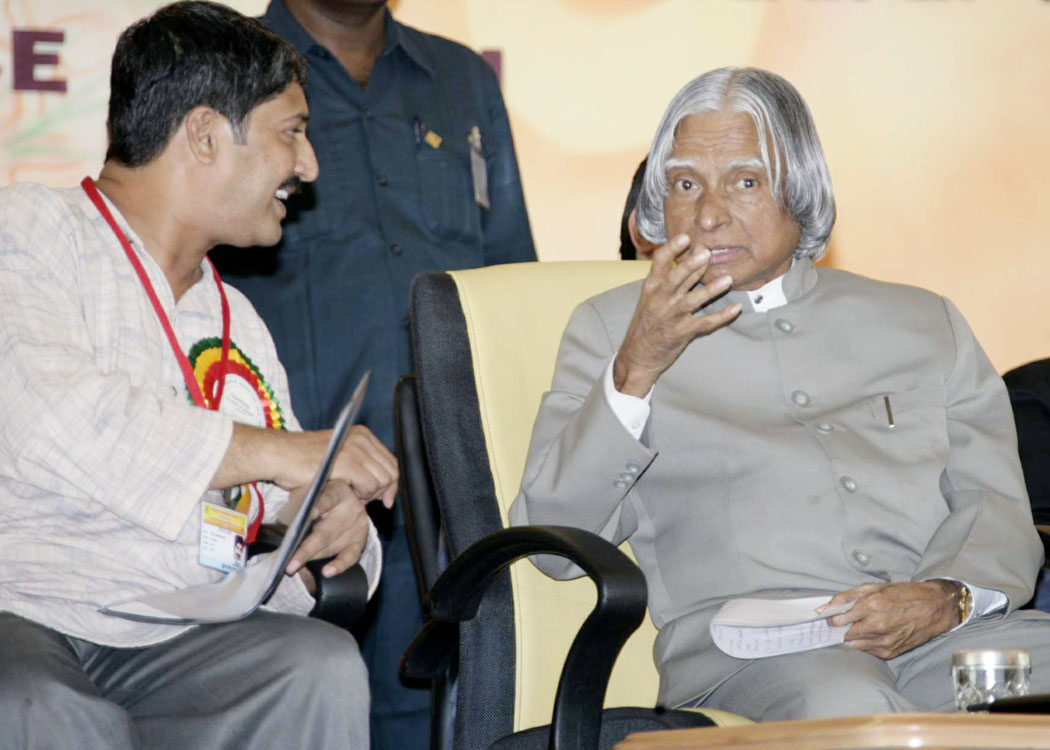

Anti Ballistic Missile
Now I would like to describe one of the very important events which took place in Nov 2006. India has designed an anti-ballistic missile (ABM) for countering ballistic missiles. A ballistic missile is used to deliver nuclear, chemical, biological or conventional warheads in a ballistic flight trajectory. The term "anti-ballistic missile" describes any antimissile system designed to counter ballistic missiles. ABM systems are designed to counter nuclear-armed ballistic missiles. India has an active ABM system using high precision radars. In November of 2006, India successfully conducted the PADE (Prithvi Air Defence Exercise) in which an Anti-ballistic missile, called the Exoatmospheric interceptor system intercepted a Prithvi-II ballistic missile. India became the fourth nation in the world to acquire such a capability and the third nation to develop it through indigenous effort. This test has become successful because of our core competence in science, physics and mathematics and the expertise that we have gained in the Radar technology, simulation, computer software and the communication technology. The thousands of simulation tests and our scientists and engineers hardwork have helped india to target the missile with exact accuracy on a head-on hit with the target. Radar was continuously tracking the incoming missile and transmitting the data online to the anti-ballistic missile with its trajectory path, velocity and its speed. It was a bueatiful scene to see through the point when the anti-ballistic missile intercepts the target. This is the technological capability that our nation has developed. For all these successes, the basic foundation is science and technology.
Dear Children, since the focal theme of this years state Level children science congress is "Bio-diversity - Nurture Nature for our Future", I would like to share with you how the children can contribute through science and technology for mapping the environment and ecology for preserving and nurturing the nature.
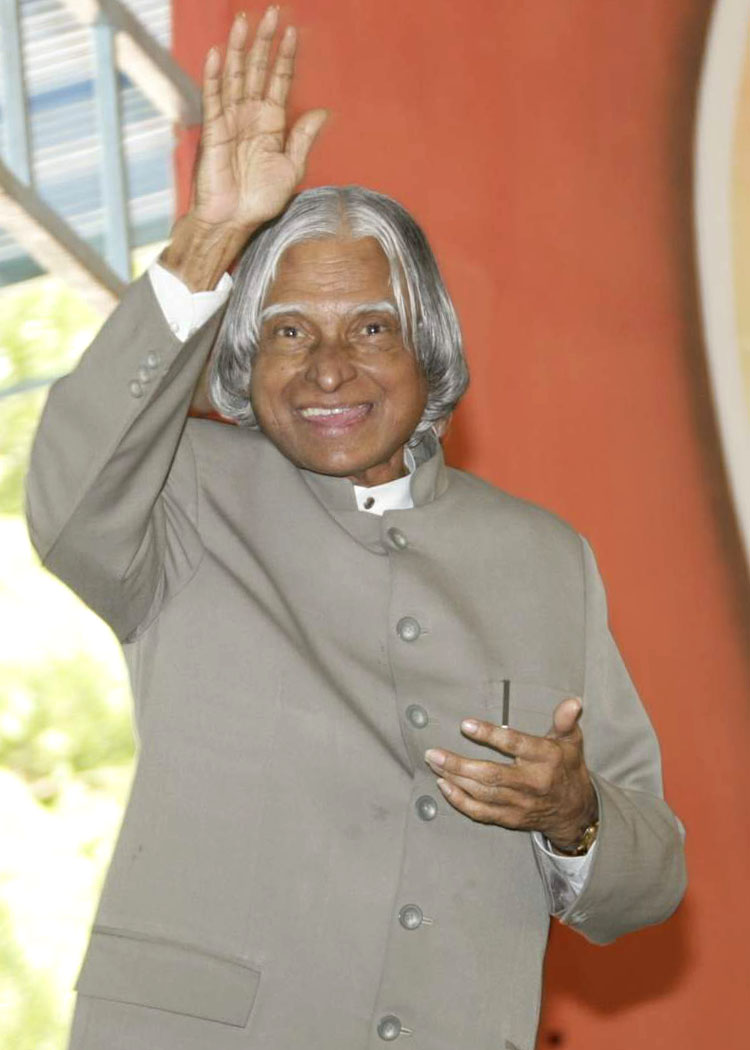

Mapping the Neighbourhood by the children
Department of Science and Technology has taken up a programme called "Mapping the Neighbourhood". In Almora district in Uttaranchal children from 20 schools have been motivated to use mapping techniques to investigate and map basic socio-economic, environmental and ecological issues being faced by the neighbourhood community. Armed with the scientific and technological tools such as Global Positioning System (GPS), Geographic Information System (GIS), Space Imagery incorporated in the hand held computers, the children are creating maps with the neighbourhood details to improve their understanding of the immediate environment. These maps will enable further the technological community to find solutions for the regeneration of fast disappearing natural sources of water, improving road connectivity, finding better locations for electricity and water distribution points, reducing traffic congestion and improved systems of garbage collection. The children propose to extend their understanding to issues of agriculture and irrigation, health and nutrition and so on.
I am sure that this method of learning will restore the joy of discovery and invention by the children. Also, the mapping which the children are advised to do about garbage collection, garbage dumping and recycling will enable the municipal authorities to provide a clean environment. Also, since the children are involved even the elders will abide by the laws of the land more easily because of their love and affection.
In this context, dear children, it is important for all of you to know energy is very important for the economic growth of any nation. It is essential for all of you to understand, how India can attain energy independence by 2030.


Energy Independence
India is in the developing pace which will need large amount of energy. As a long term policy India has to go for energy independence. The main features of energy independence is to increase the use of renewable energy like solar energy on large scale, establish large number of thorium based nuclear power plant and go for massive plantation of Jatropha which will lead to production of Bio-fuel for use in the automobile sector. Our target is to achieve Energy Security by 2020 leading to Energy Independence by 2030 and beyond. What are the challenges?
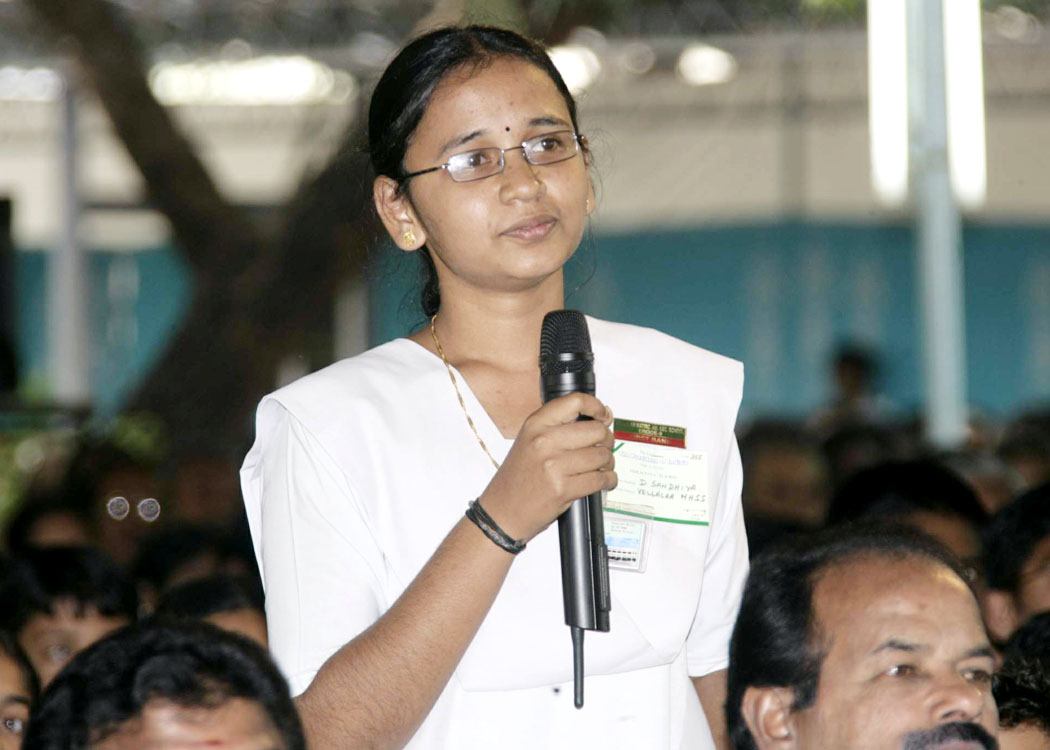

Structure of Energy Sources for India
Based on the progress visualized for the nation during the next two decades and economies and savings planned to be achieved, the power generating capacity has to increase to 400,000 MW by 2030 from the existing hundred and thirty thousand Megawatts in India. Energy independence has got to be achieved through three different sources namely Hydel capacity, nuclear power and non-conventional energy sources primarily through solar and wind energy, apart from thermal power through clean coal technology. The Hydel capacity is expected to contribute an additional 50,000 MW. Large scale solar energy farms of hundreds of megawatts capacity in certain number could contribute around 55,000 MW and wind energy can contribute 64,000 MW. The nuclear power plants should have a target of 50,000 MW of power. The balance 51,000 MW has to be generated through the conventional thermal plants using clean coal technologies. Let me discuss about the profile of renewable energy systems.
The energy mix for energy independence envisages use of four routes: (a) Hydel + Thermal till coal availability (b) Solar power using high efficiency CNT based SPV cells and wind energy (c) Thorium based nuclear reactors (d) Bio-fuel for transportation sector.
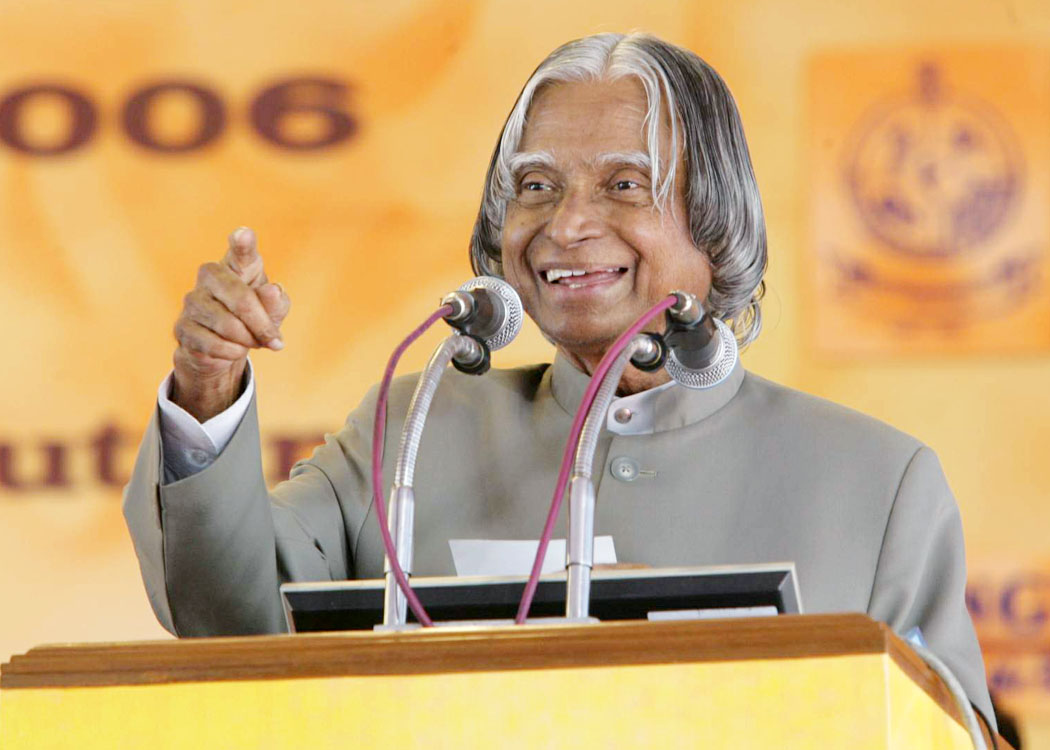
Renewable energy: Today, the prime motivation for us to consider the renewable energy alternatives to the fossil fuel, is the concern for our environment and the rising cost of economy. The recent trends in the uncontrolled increase in the cost of fossil fuels have almost nullified their economic advantage. Besides, the newer technologies such as CNT (Carbon Nano Tubes), will improve the efficiency of solar cells, the hydrogen fuel cells and many such green technologies economically very attractive as well. Rashtrapati Bhavan is considering generation of electricity from renewable resources to take care of its energy needs. One such proposal under consideration amongst many is the setting up of an 5 MGW Grid locked Solar Power Photovoltaic Plant occupying an area of 300 by 300 meters for supplying the entire Rashtrapati Bhavan Building complex including the estate. This solar plant apart from providing energy will reduce the dumping of certain quantity of carbon-di-oxide, sulfur oxide and nitrogen oxide which is normally emitted in the conventional thermal power plants.
While the world of science and technology is focusing on improving the efficiency of photo voltaic cells using nano technology through aligned CNTs to make economic sense of generation of Solar Photo Voltaic energy, many other avenues of using solar energy are also being attempted world over. One such route is to utilize the solar thermal. They use solar collectors intelligently to provide power for hot water and other heaters. In fact for lighting, fans, lifts air conditioners etc are from solar thermal. I consider the combination of the two systems may be even better than the generation of electricity from fossil fuel.
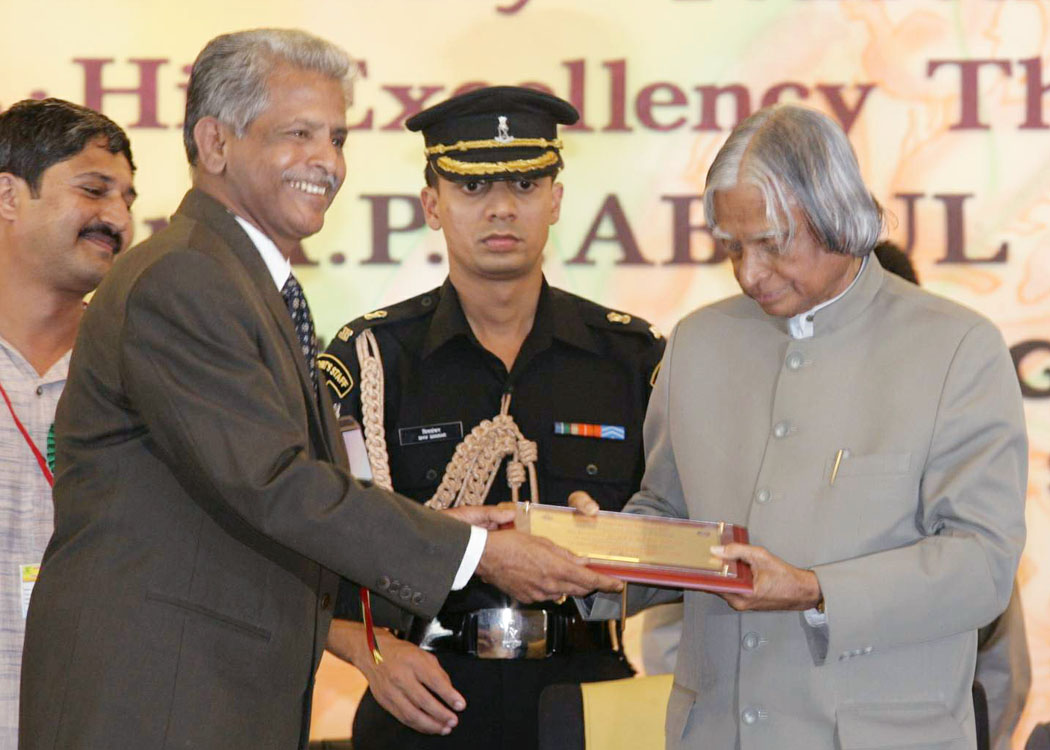
Nuclear Energy: Nuclear power generation has been given a thrust by the use of uranium based fuel. However there would be a requirement for a ten fold increase in nuclear power generation even to attain a reasonable degree of energy self sufficiency for our country. Therefore it is essential to pursue the development of nuclear power using Thorium, reserves of which are higher in the country. Technology development has to be accelerated for Thorium based reactors since the raw material for Thorium is abundantly available in our country. Also, Nuclear Fusion research needs to be progressed with international cooperation to keep that option for meeting the large power requirement, at a time when fossil fuels get depleted.

Bio-fuel generation: We have nearly 63 million hectares of wasteland available in the country, out of which 33 million hectares of wasteland have been allotted for tree plantation. Certain multi-purpose bio-fuel plants can grow well in wasteland with very minimum input. Once cultivated, the crop has fifty years of life. Fruiting can take place in these plants in two years.
Bio-fuel plants grown in parts of the waste land, for example, 11 million hectares, can yield a revenue of approximately Rs.20,000 crore a year and provide employment to over 12 million people both for plantation and running of the extraction plants. It will reduce the foreign exchange outflow paid for importing crude oil, the cost of which is continuously rising in the international market. The Bio-fuel is Carbon neutral. The oil can also be used for soap and in candle industries. De-oiled cake is a raw material for composting and the plantation is also good for honey production. We should absorb best of the technologies available worldwide and start commercial operation immediately. One time investment needed for bio-fuel plantation to production in 11 million hectares will be approximately Rs. 27000 Crores. The capital equipment and investment in plant and machinery can come from bank loans and private sector entrepreneurs. I have seen the progress in bio-fuel plant cultivation, preparation of seedlings, tissue culture and development of non-toxic hybrid varieties in Tamil Nadu Agricultural University, Coimbatore. They have also worked from processing of seeds to bio-fuel production by the indigenous design and development of bio-fuel plants. Anand Agriculture University at, Anand (Gujarat) has also made progress in the bio-fuel cultivation and processing in Gujarat. Bio-fuel plants can be grown in a number of states in the southern, western and central part of the country. Some of our States like Chhattisgarh and Mizoram have taken the initiative and have planted Jatropha on a large scale which will start yielding results in the next two years.
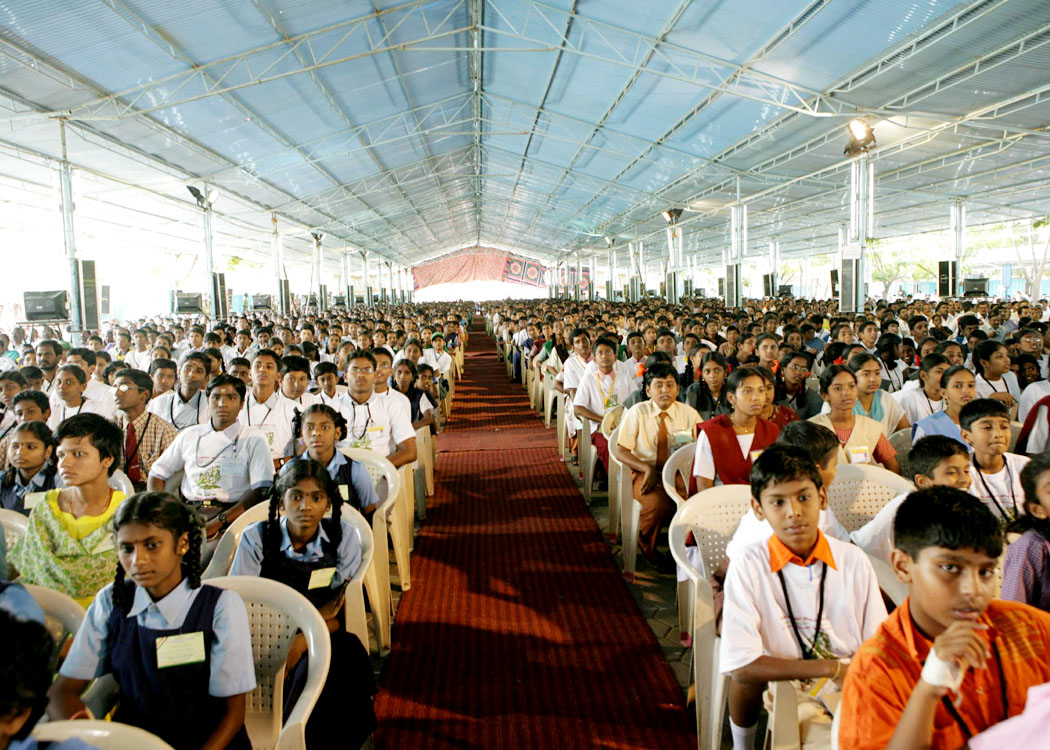

Conclusion
1. Courage
Dear friends, will you take an oath with me on Courage.
COURAGE
Courage to think different,
Courage to invent,
Courage to discover the impossible,
Courage to travel into an unexplored path,
Courage to combat the problems and Succeed are the unique qualities of the youth.
As a youth of my nation, I will work and work with courage to achieve success in scientific discoveries.
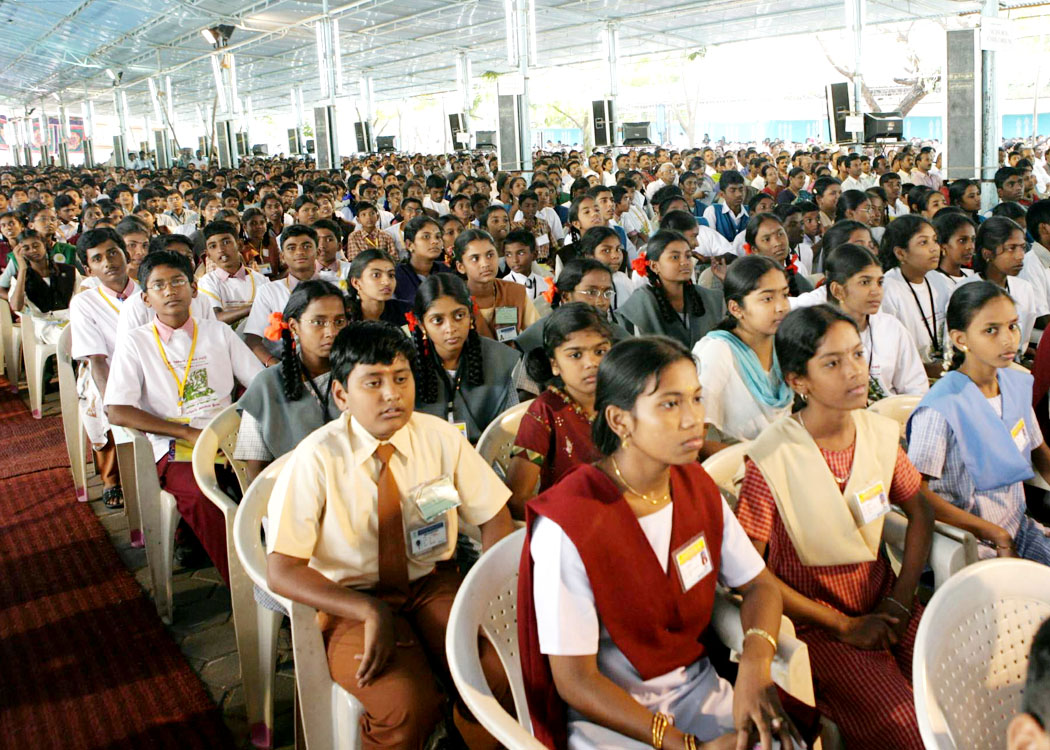
2. Books as your friends
I would request all of you to read the following five books during the year 2006 in addition to your course material.
a. Empires of the Mind: Lessons To Lead And Succeed In A Knowledge-Based by Denis Waitley
b. Journey into Light: Life and Science of C.V. Raman by G. Venkataraman
c. 'The Big and the Small' from the Microcosm to the Macrocosm written by Dr. G. Venkataraman, (Two volumes)
d. A Brief History of Time : From the Big Bang to Black Holes by Stephen W. Hawking
e. Vision: by Michio Kaku
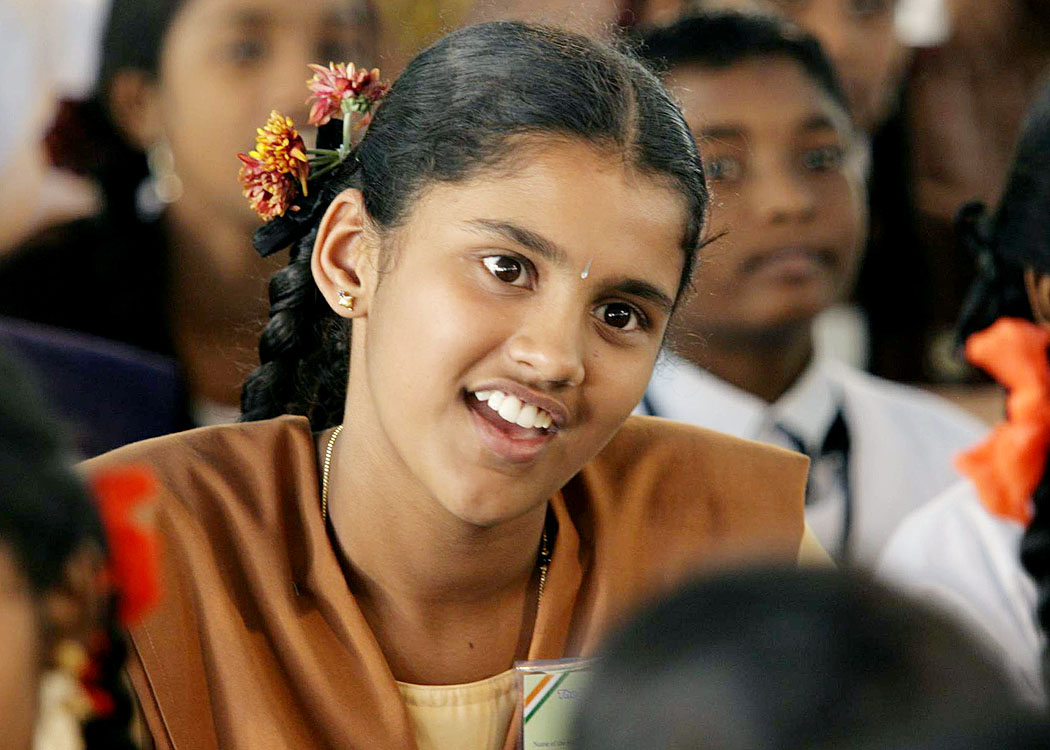
3. A mission Statement
Dear friends, may I request all of you to take a page, think and write about your own life statement "What I will be remembered for" You can send your answer to my e-mail ID: [email protected]. The best life statements will get a beautiful gift from me.
My greetings to all the participants of State Level Children's Science Congress organized by Tamilnadu Science forum and I wish you all success in your scientific pursuit as a life time mission.
May God bless you.
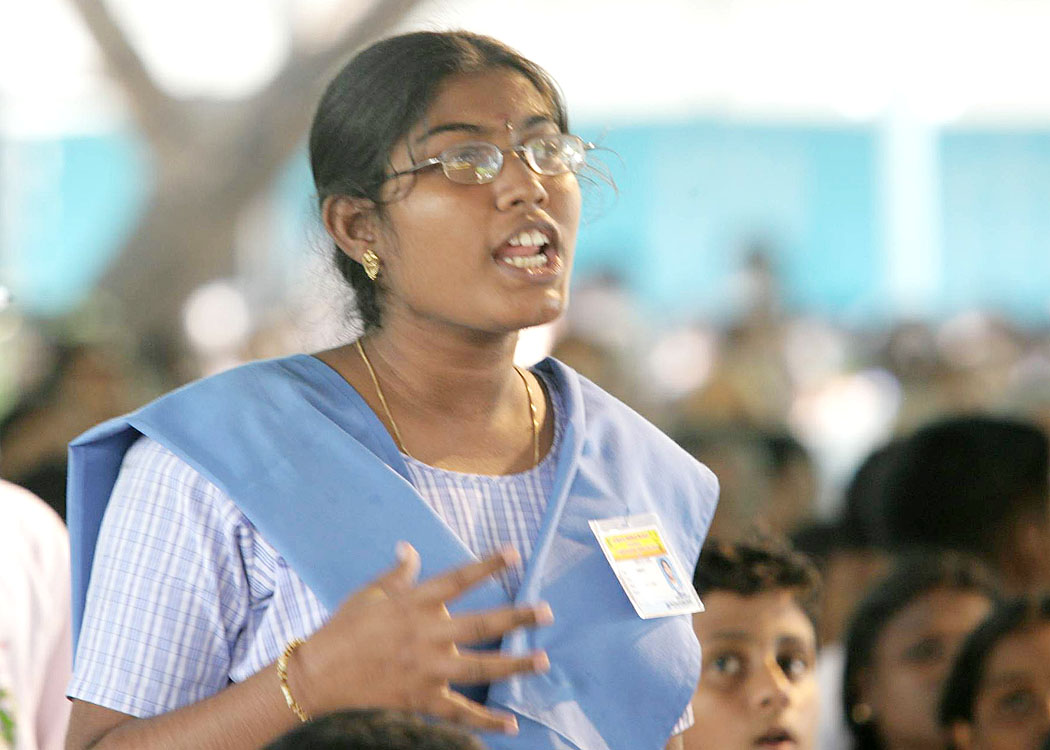
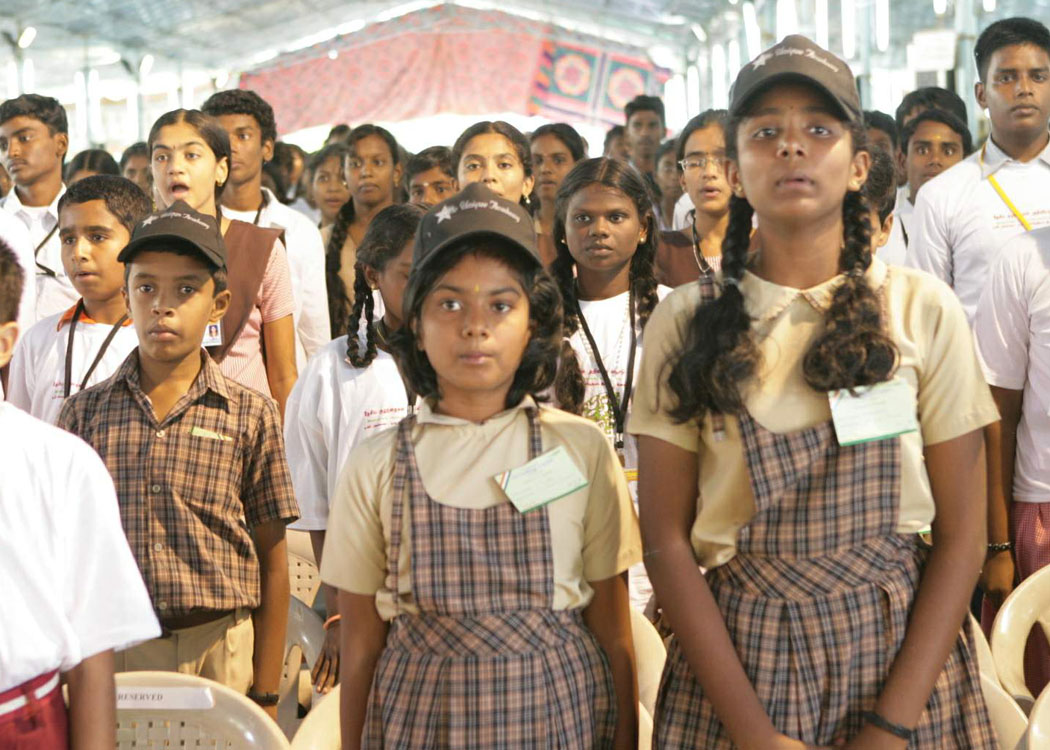
<<Back
|
|